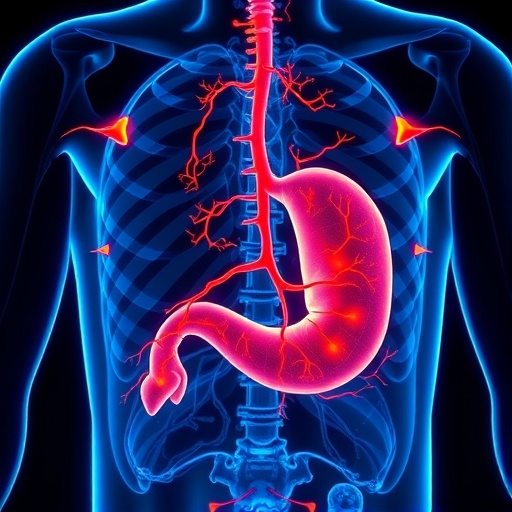
Credit: Travis Stracker, IRB Barcelona.
Barcelona, 16 january 2018.- Researchers from the Genomic Instability and Cancer Laboratory at Institute for Research in Biomedicine (IRB Barcelona) have identified a key role for EXD2 in protein production in the mitochondria, the cellular organelles responsible for the majority of energy generation.
"We have provided extensive evidence that EXD2 is a mitochondrial protein and that its main function is to facilitate the production of proteins in the mitochondria," explains Travis H. Stracker, head of the laboratory.
This work challenges the interpretation of previous studies that suggested that EXD2 performs a DNA repair function in the nucleus. "However, at this point we can't rule out other possible functions", declares Stracker.
Published in Nature Cell Biology, the study presents the results from a collaborative multidisciplinary approach, using state of the art proteomics, metabolomics, biochemistry, cell biology and the development of the fruit fly, Drosophila melanogaster, to pinpoint the function of EXD2.
Cleaning up the energy production process
Scientists identified the mitochondrial ribosome (or mitoribosome), the cellular machine required for protein production in the mitochondria, as a major interactor of EXD2. "EXD2 targets messenger RNA to keep the mitoribosome "clean" until it is mature and ready to generate proteins. In the absence of EXD2, cells are severely defective for mitochondrial protein production," explains Joana Silva, first author of the study and former PhD student of the Genomic Instability and Cancer Laboratory.
EXD2's role in the mitoribosome is critical for suppressing the generation of Reactive Oxygen Species (ROS), that can arise due to mitochondrial defects, and facilitating normal development in Drosophila. Flies lacking EXD2 showed increased ROS levels, delayed development and reduced fertility.
"The results highlight the complexity of mitochondrial protein production and demonstrate that many levels of regulation remain to be elucidated", says Stracker.
Potential target for metabolic disorders and cancer therapy
These studies may have implications for the understanding and treatment of metabolic disorders, such as diabetes, and cancer. In relation to the latter, in recent years, the importance of mitochondrial energy generation in tumors has been revisited and the inhibition of protein production has been proposed to be a therapeutic target by many groups.
As EXD2 is an enzyme and required for mitochondrial translation, it is possible that targeting it could have antitumoral effects, something that will be tested in future experiments.
###
This study was supported by the Ministry of Economy, Industry and Competiveness (MINECO), as well as the Finnish Cultural Society and the Fundação para a Ciência e a Tecnologia that funded the theses of the first two authors.
The work was performed in collaboration with several other labs that made important contributions, including Aidan Doherty in the University of Sussex, Brian Raught in the University of Toronto, Oscar Yanes in the Universitat Rovira i Virgili and Andreu Casali and Lluís Ribas de Pouplana in the IRB Barcelona.
Reference article:
Joana Silva, Suvi Aivio, Philip A. Knobel, Laura J. Bailey, Andreu Casali, Maria Vinaixa, Isabel Garcia-Cao, E?tienne Coyaud, Alexis A. Jourdain, Pablo Perez-Ferreros, Ana M. Rojas, Albert Antolin-Fontes, Sara Samino-Gené, Brian Raught, Acaimo Gonza?lez-Reyes, Lluis Ribas de Pouplana, Aidan J. Doherty, Oscar Yanes and Travis H. Stracker
EXD2 governs germ stem cell homeostasis and lifespan by promoting mitoribosome integrity and translation
Nature Cell Biology (2018) doi:10.1038/s41556-017-0016-9
Media Contact
Sònia Armengou
[email protected]
34-934-037-255
http://www.irbbarcelona.org
Original Source
https://www.nature.com/articles/s41556-017-0016-9 http://dx.doi.org/10.1038/s41556-017-0016-9




